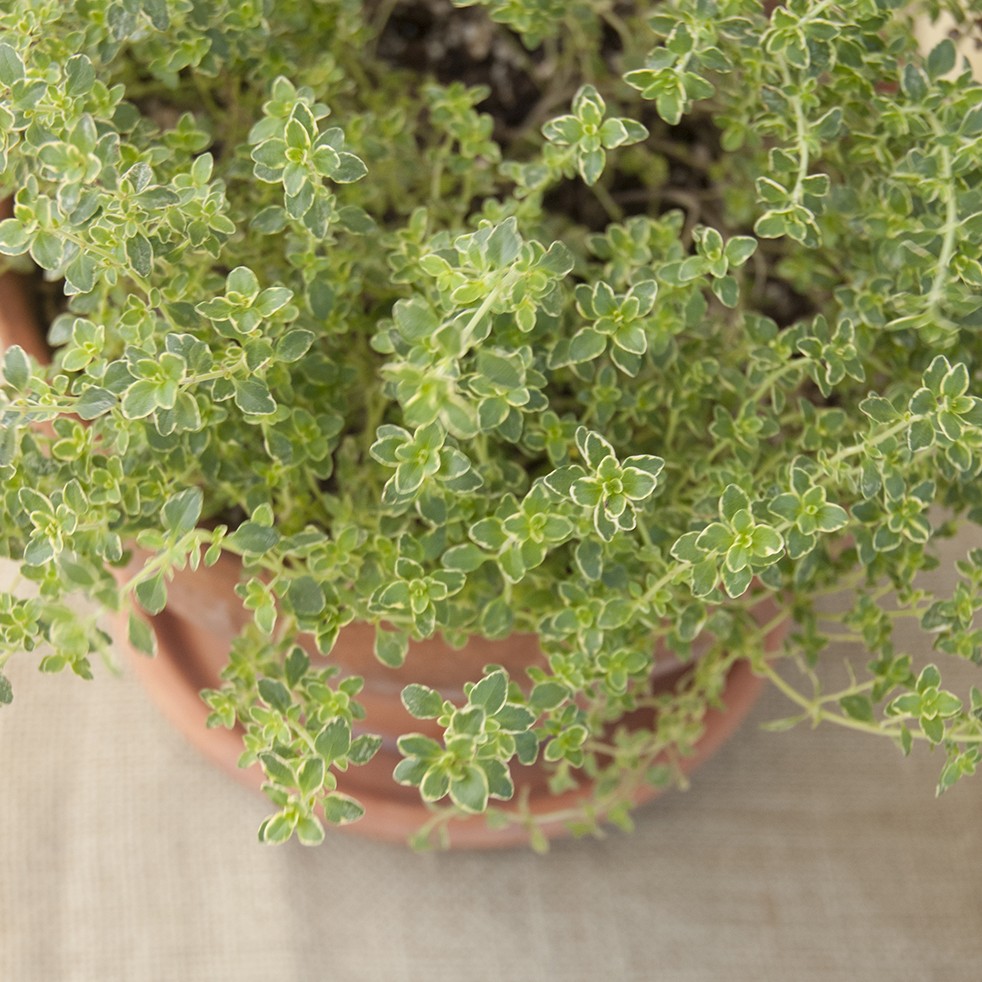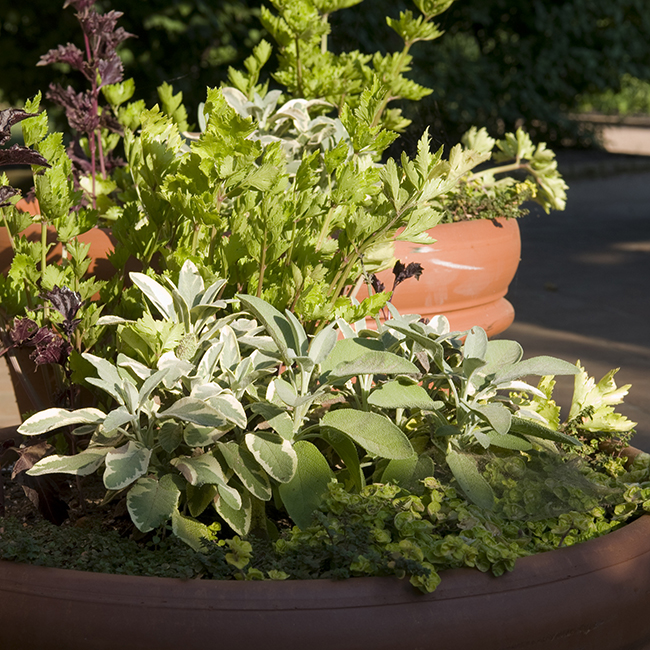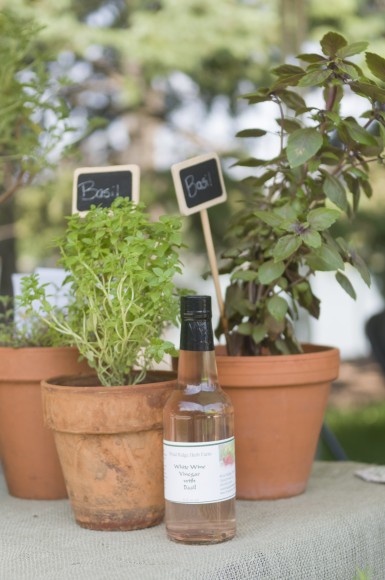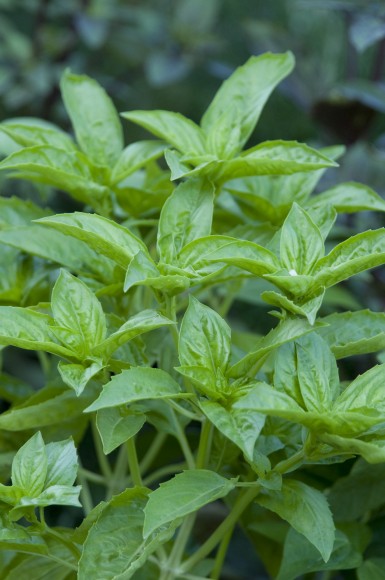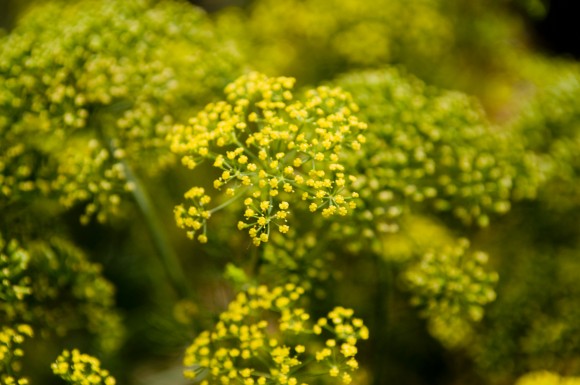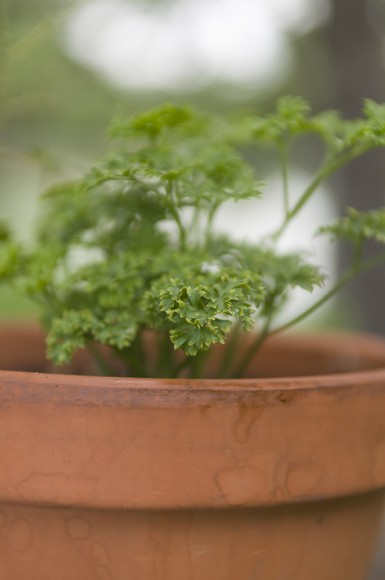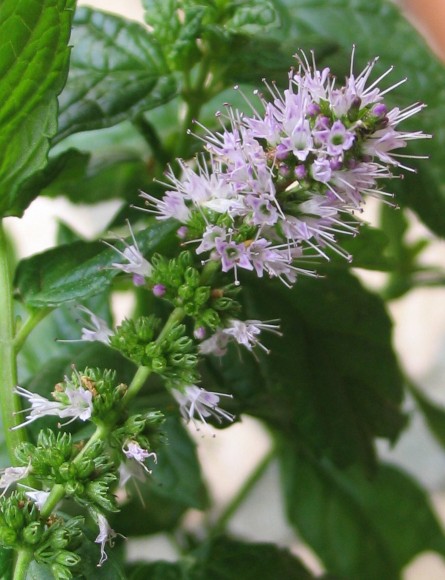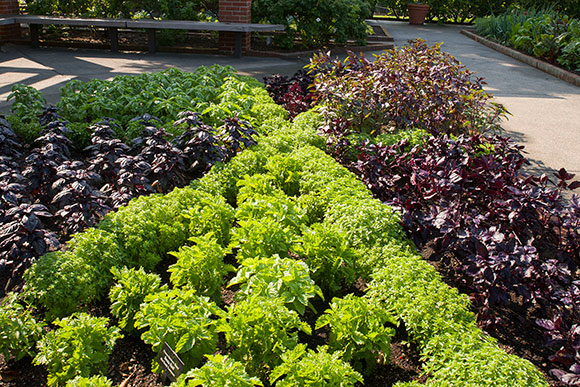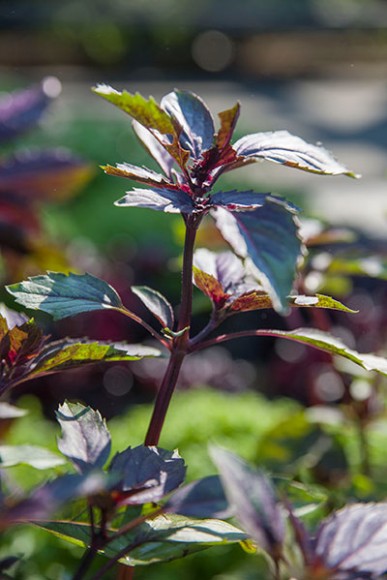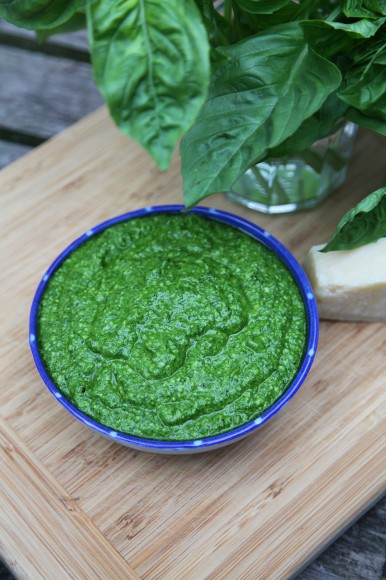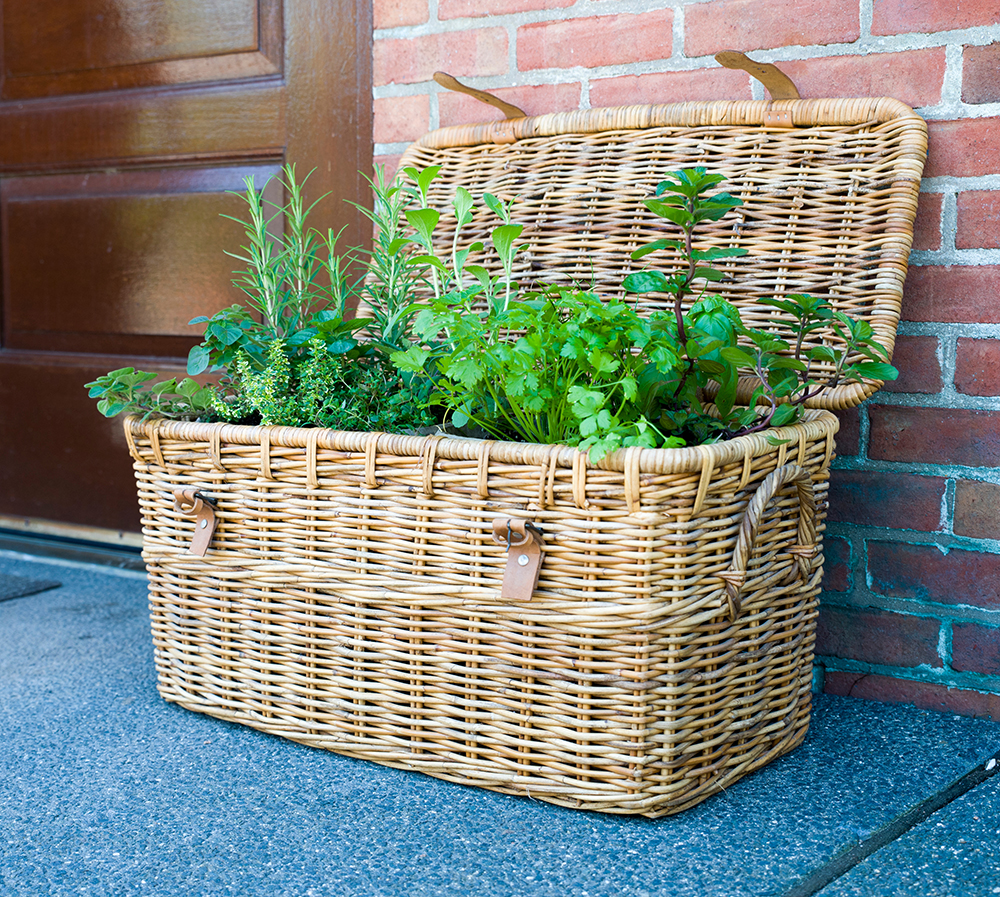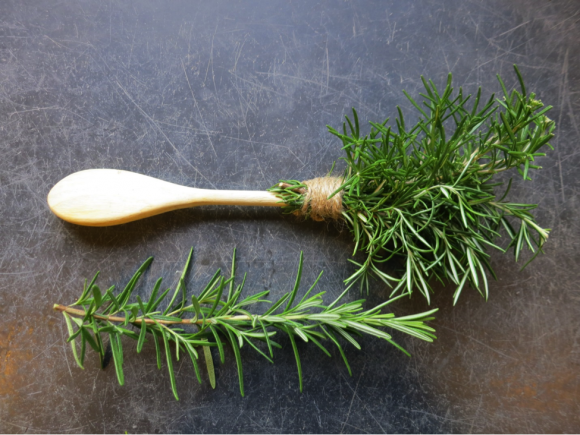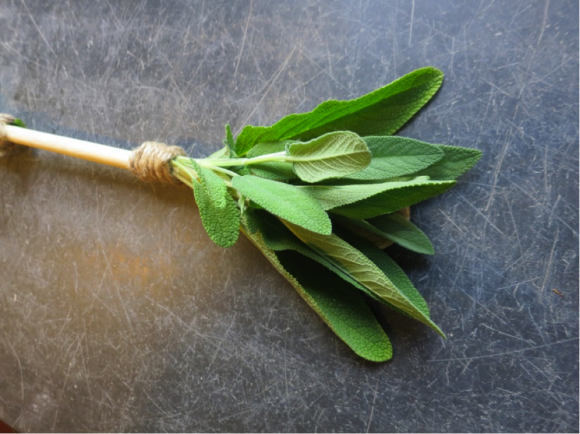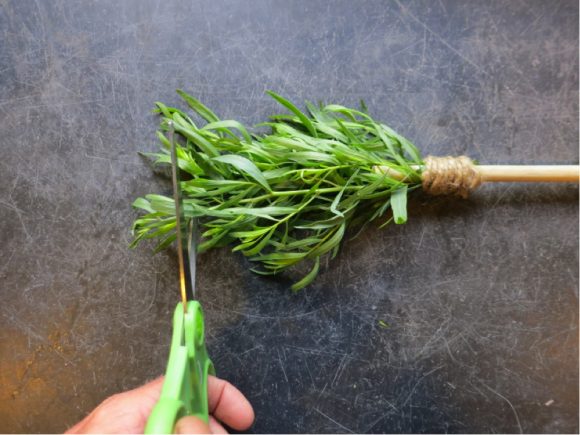Here are a few great ideas to get your taste buds going:
- Add a bit of mint to a basil pesto
- Grow thyme in unexpected flavors: orange, lime, lemon (all are growing in our kitchen herb garden)
- Dry and mix your own herbes de Provence (check out our recipe here)
- Infuse lavender blossoms in lemonade
Speaking of infusions, “herb mixologist” Kasey Bersett Eaves opened our eyes to the world of herb-infused beverages.
From Garden to Glass
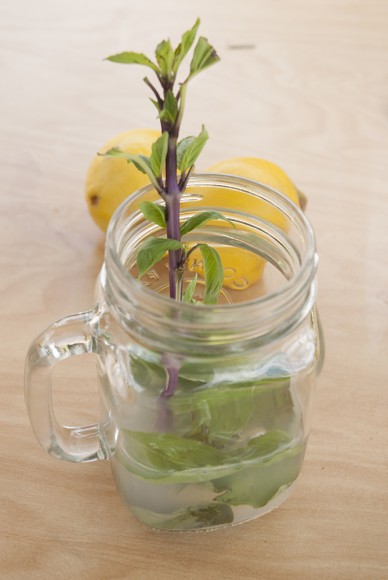
Just about any herb you’d grow in your yard can be used to flavor drinks. Herbs + fresh fruit = a yummy base for all sorts of hot and cold beverages. Grab what’s in season in the yard and experiment. A few fresh ideas:
Basil + strawberry
Mint + raspberry
Sage + cherry
Rosemary + watermelon
Lemon verbena + honeydew melon
Thyme + cucumber
Lavender + berries
Dill + lime
Oregano + berries
Cilantro + watermelon
Tarragon + peach
Thirsty for more? Let’s move on to muddling.
Muddling 101
Infusion starts with muddling.
Here’s the first rule of muddling: Don’t overmuddle. Muddling is the process of gently—repeat, gently—bruising the leaves of herbs. As Kasey said, “If you hear the leaves tear, you’re overmuddling.” The goal is to release the fresh, green taste and aroma of the leaves, not to break or pulverize them (think Cary Grant, not Iron Man).
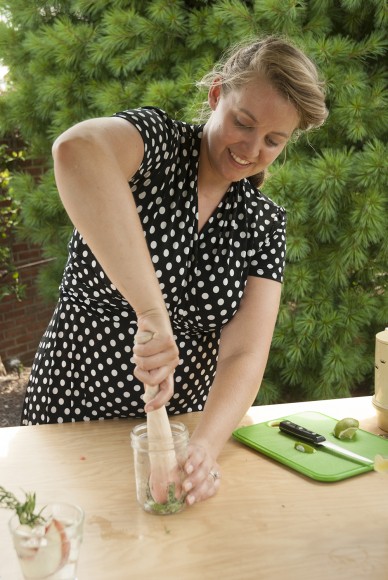
Here’s the second rule of muddling: always hold your arm at a 90-degree angle, pressing straight down from the elbow through the wrist through the muddler. (What’s a muddler? Read on.) Press down once, release, and rotate the jar a quarter turn. Repeat five more times. Six presses are about right for a single drink—more if you’re making a pitcher’s worth.
Here’s the third rule of muddling: muddlers are very cool. Essentially a press that reaches to the bottom of a glass or pitcher, muddlers can be found at most kitchenware stores, both in hardwood (walnut, maple) and stainless steel versions. Yes, a wooden spoon works, too. Vintage aficionados: look for stainless steel bar sets from the ’50s and ’60s. That big bump at the end of the long swizzle stick is a muddler.
Infusions
Herbal infusions are a why-didn’t-I-think-of-that idea that’s easy, healthy, and really tasty (hot on the restaurant scene, too). Kasey shared her recipe:
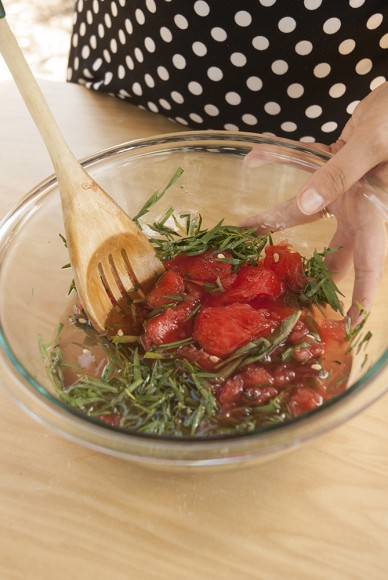
Herbal Water Infusion
- Fresh herbs (see list above)
- Fresh fruit (any but bananas; see list)
- 2-quart jar or pitcher
- Muddler or wooden spoon
- Water
Wash fruit and rinse herbs thoroughly. Place enough herbs inside the jar to cover the bottom. Add about a cup of fruit. (Amounts of both will vary according to taste—feel free to experiment!) Bruise fruit and herb leaves with muddler to release some of the juices and flavor. Do not pulverize! Fill jar with ice and water. Cover and refrigerate for two hours. Strain water into glasses. Refrigerated infusions will keep in the refrigerator up to five days.
Icy & Sweet: Herbal Tea
In summer, iced tea is the beverage du jour. Love sweet tea, but don’t like its sugar? Kasey’s tea recipe uses fresh stevia—an herb that’s 30 times sweeter than sugar—plus other herbs from your garden for a greener version of sweet. Just add ice and a tall glass.
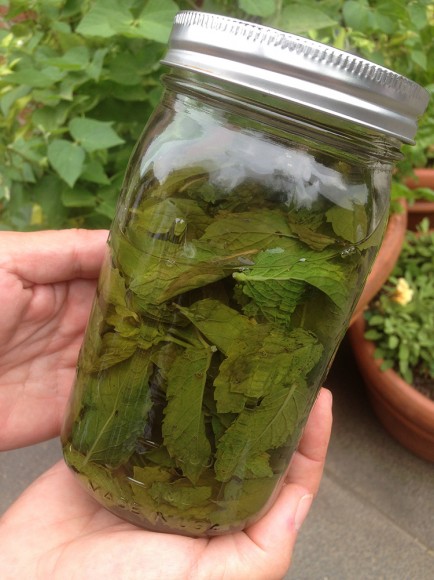
Backyard Herb and Stevia Iced Tea Concentrate
- ¼ cup stevia leaves
- 2 cups water
- 1½ cups fresh herb leaves (mint or lemon verbena taste best, but feel free to experiment!)
For concentrate: Rinse and drain herbs. Add all ingredients above to a small, nonreactive pot and bring to a boil on the stove. Let boil for one minute; remove from heat. Allow mixture to steep and cool six hours or overnight. Strain cooled liquid into a glass jar. Store in the refrigerator up to one week, or freeze for later use.
To use: Mix 1 cup of concentrate to 3 cups water, or to taste.
Simple Syrups Rock
“Simple syrups” are called that for a reason: they’re truly easy to concoct. Added in place of sugar to your favorite lemonade, soda, sweet tea, or cocktail recipe, simple syrup is the secret to a full-flavored summer drink.
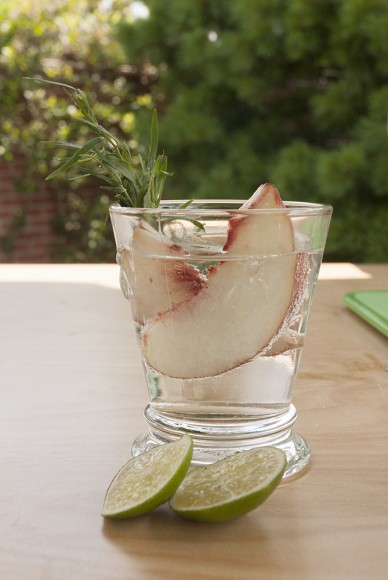
Easy Herbal Simple Syrup
- 1 cup water
- 1 cup sugar
- ½ cup herb of your choice (whole leaves or lightly chopped, packed into measuring cup)
Rinse and drain herbs. In a small, nonreactive pot, stir water and sugar together over heat until sugar dissolves, bringing the mixture just to a boil. Add herbs in, stir gently for 30 seconds, then remove from heat. Let the mixture cool (approximately 30 minutes). Strain.
Store the syrup in an airtight container in the refrigerator for use within a week to 10 days, or freeze in ice cube trays for convenient later use.
Simple syrups make memorable cocktails. Add a splash of herbal simple syrup to a champagne flute before topping off with Prosecco or dry white wine for a cheers-worthy toast. Or enjoy your herbs on ice—freeze the syrup in ice cube trays (top off each cube divider with a small herb leaf for garnish before freezing) and use as a sweetener for iced tea or cocktails. Imagine a glass of bourbon that slowly becomes a mint julep because you added minty simple syrup ice cubes!
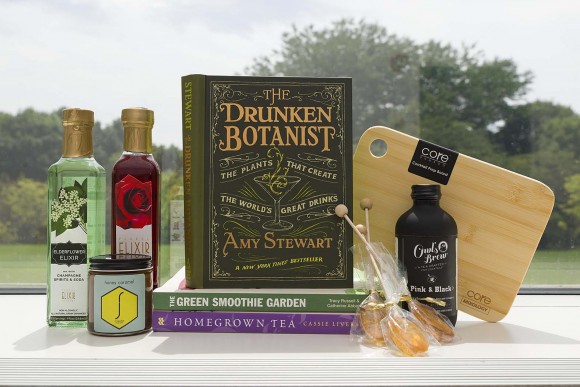
Interested in dabbling in the cocktail arts yourself? Kasey recommends The Home Distiller’s Handbook as a good starter guide. Find drink enhancers and more at the Garden Shop, including elderflower and rose elixirs, and the mysterious Owl’s Brew tea concentrate—best with bourbons and whiskeys. Cheers!
©2014 Chicago Botanic Garden and my.chicagobotanic.org

